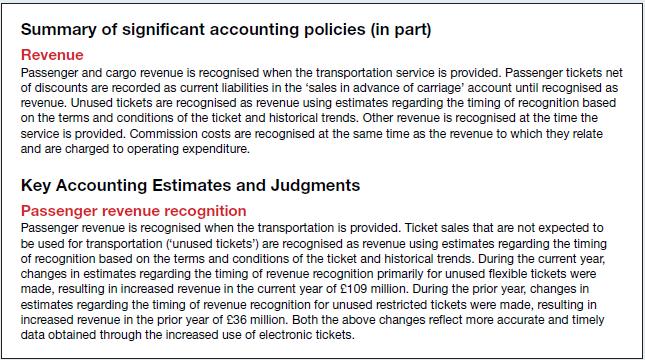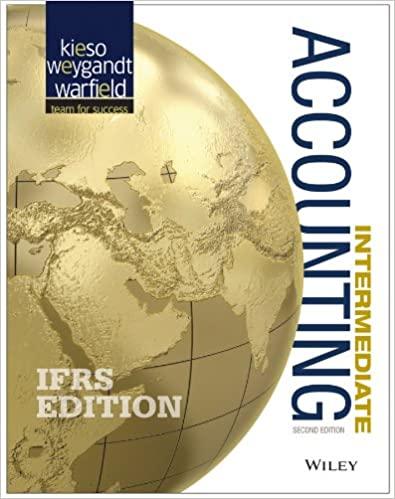Question:
Financial Statement Analysis Case British Airways The following note appears in the “Summary of Significant Accounting Policies” section of the annual report of British Airways (GBR).

Instructions
(a) Identify the revenue recognition policies used by British Airways as discussed in its note on significant accounting policies.
(b) Under what conditions are the revenue recognition methods identified in the first paragraph of British Airways’ note above acceptable?
(c) From the information provided in the second paragraph of British Airways’ note, identify the type of operation being described and defend the acceptability of the revenue recognition method.
Transcribed Image Text:
Summary of significant accounting policies (in part) Revenue Passenger and cargo revenue is recognised when the transportation service is provided. Passenger tickets net of discounts are recorded as current liabilities in the 'sales in advance of carriage' account until recognised as revenue. Unused tickets are recognised as revenue using estimates regarding the timing of recognition based on the terms and conditions of the ticket and historical trends. Other revenue is recognised at the time the service is provided. Commission costs are recognised at the same time as the revenue to which they relate and are charged to operating expenditure. Key Accounting Estimates and Judgments Passenger revenue recognition Passenger revenue is recognised when the transportation is provided. Ticket sales that are not expected to be used for transportation ('unused tickets') are recognised as revenue using estimates regarding the timing of recognition based on the terms and conditions of the ticket and historical trends. During the current year, changes in estimates regarding the timing of revenue recognition primarily for unused flexible tickets were made, resulting in increased revenue in the current year of 109 million. During the prior year, changes in estimates regarding the timing of revenue recognition for unused restricted tickets were made, resulting in increased revenue in the prior year of 36 million. Both the above changes reflect more accurate and timely data obtained through the increased use of electronic tickets.







